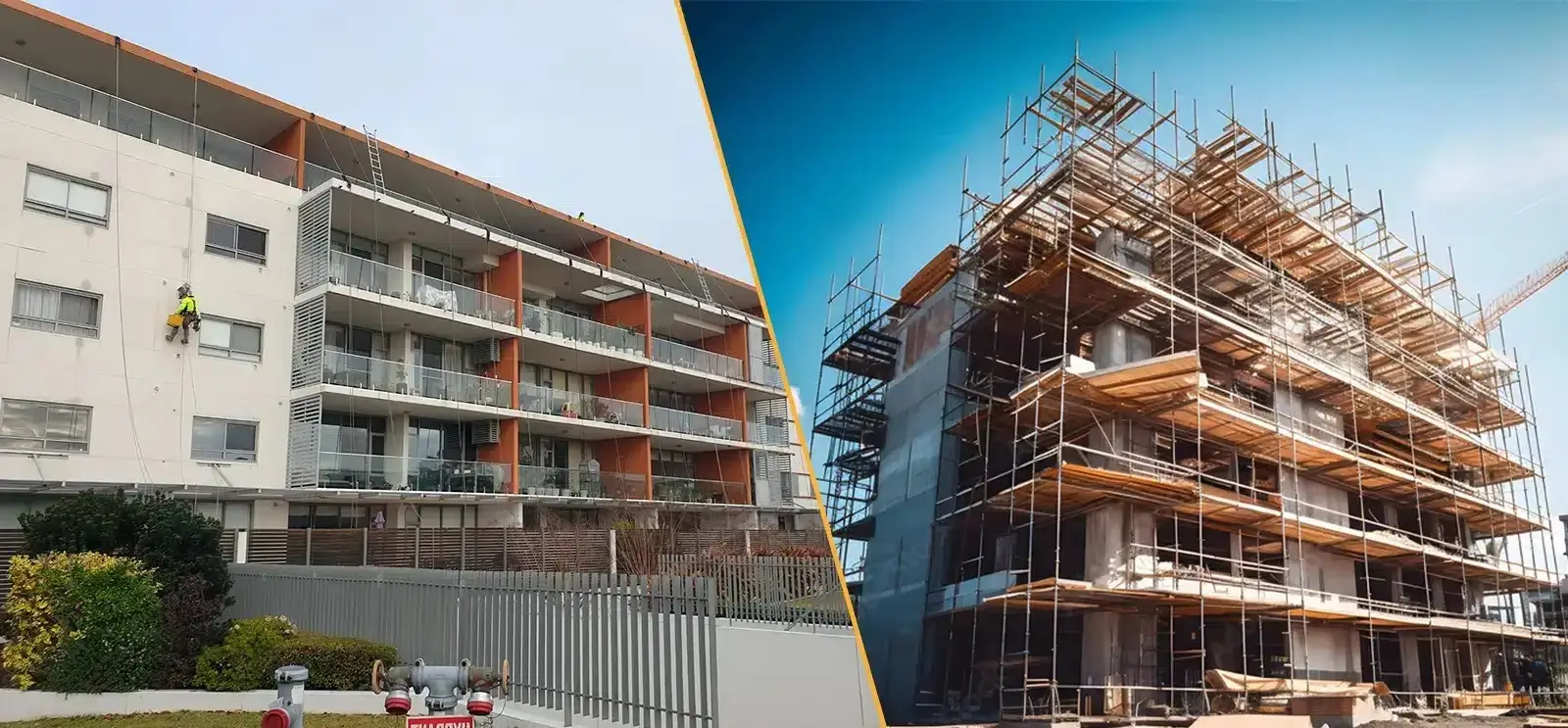Rope Access vs. Scaffolding: A Comparative Analysis

When it comes to working at heights, choosing the right access method is crucial for the success of any construction, maintenance, or inspection project. Two popular methods—rope access and scaffolding—each have their own advantages and limitations. In this article, we’ll compare rope access vs. scaffolding in terms of cost, time efficiency, safety, and environmental impact. This comparison will help you make an informed decision for your next project.
Rope Access vs. Scaffolding: A Cost Comparison
Rope access is generally more cost-effective than scaffolding. It requires minimal equipment and fewer technicians to set up and dismantle. This lean approach translates to lower labor and material costs, making it ideal for projects with tight budgets.
In contrast, scaffolding demands extensive equipment, longer setup times, and larger teams to install and remove the structures. These factors increase costs significantly, especially for long-term projects.
Time Efficiency: Faster Setup with Rope Access
One of the major benefits of rope access is its quick setup. Technicians can often begin working within hours of arriving on site. This speed makes rope access a preferred option for urgent repairs or inspections.
On the other hand, scaffolding can take several days—or even weeks—to assemble, depending on the size and complexity of the project. The additional time required for setup and dismantling can delay work, which may impact deadlines.
Safety Considerations for Rope Access vs. Scaffolding
Safety is a top priority in any project. Rope access has strict certification and training requirements for technicians, contributing to its strong safety record. Since rope access relies on ropes and harnesses rather than heavy structures, there’s less risk of falling objects or equipment failure affecting people below.
While scaffolding is also subject to safety regulations, its large and static structures can pose hazards. There is an increased risk of objects falling from height, and scaffolding can become unstable in strong winds or bad weather.
For more information on rope access safety standards, see SPRAT – Safety Guidelines and IRATA – Rope Access Safety.
Environmental Impact: A Greener Solution
Choosing rope access can help reduce your environmental footprint. This method uses less material, requires less energy to set up, and generates minimal waste. These factors make rope access an eco-friendly choice, especially for organizations looking to align with sustainability goals.
In contrast, scaffolding requires significant resources for production, transport, and assembly. The need for large quantities of metal, energy for manufacturing, and waste disposal after projects add to its environmental impact.
For more on sustainable practices in construction, visit EPA – Sustainable Management of Materials.
When to Choose Rope Access vs. Scaffolding
Ultimately, the decision depends on your project’s needs:
Choose rope access when you need cost-effectiveness, speed, minimal disruption, and lower environmental impact.
Opt for scaffolding when your project requires a stable platform for extended periods or involves tasks where technicians need to remain stationary for long hours.
For projects like industrial inspections, facade maintenance, or high-rise work, rope access is often the superior choice.
Learn more about our rope access services and how we can help you complete your project safely and efficiently.
FAQs: Rope Access vs. Scaffolding
What is rope access?
Rope access is a method for working at height using ropes, harnesses, and specialized equipment for safe positioning.
How does rope access compare to scaffolding?
Rope access is faster, safer, and often more cost-effective, while scaffolding offers a stable platform but takes longer to set up and remove.
Is rope access safe?
Yes. Rope access relies on strict training standards, equipment inspections, and backup safety systems.
What are the environmental benefits of rope access?
Rope access reduces material use, energy consumption, and waste, making it an eco-friendly alternative to scaffolding.
Conclusion
Both rope access and scaffolding have their place in the construction and maintenance industries. By considering factors such as project scope, budget, safety, and environmental impact, you can choose the best solution for your specific needs.
For expert advice on rope access solutions, contact our team today.

